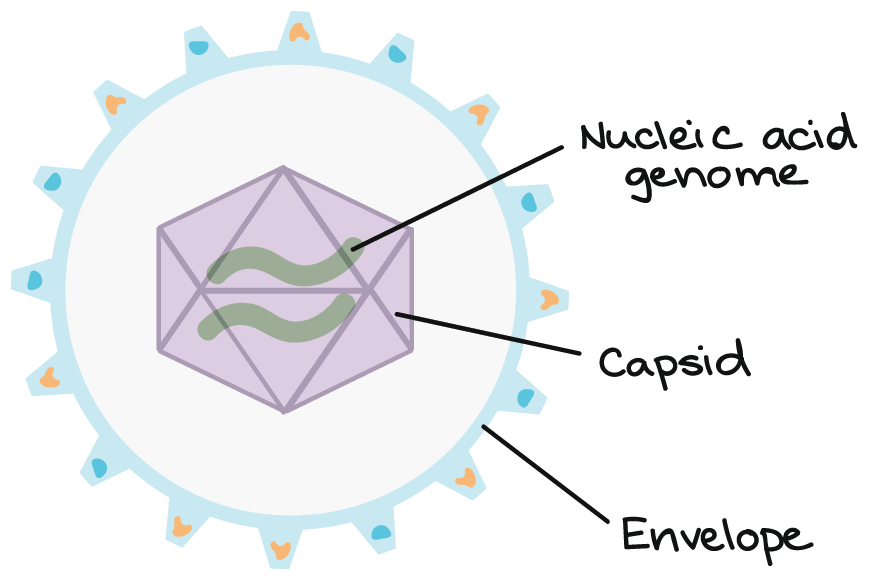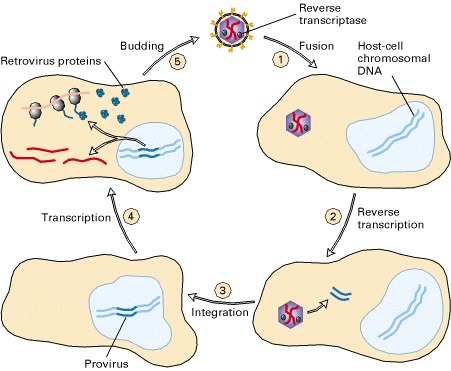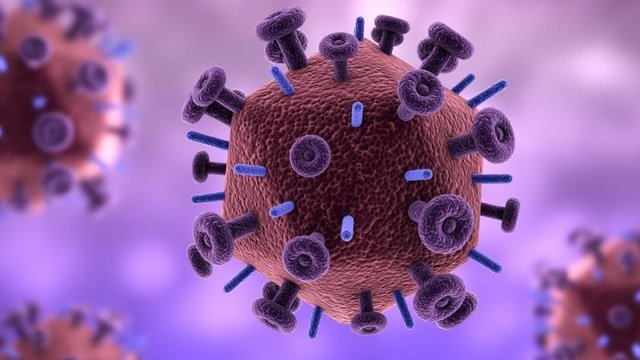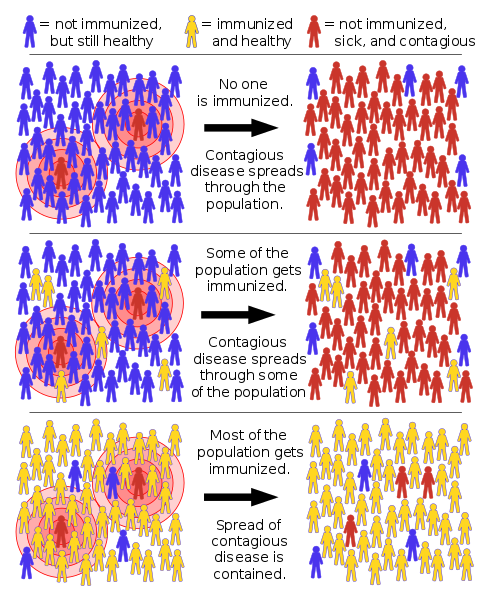According to estimations there are 1031 viruses on Earth at any given time, meaning that their number is hundred million times bigger than number of stars in the universe! No worries though, most of these viruses attack and infect microbes (bacteria, archaea, microeukaryotes), but there are still enough of them left to attack us, humans, and we will discuss them in more detail in this text.

What are viruses?
Viruses are infectious particles that can reproduce only by infecting a host cell, unlike bacteria we talked about in previous post. The most intriguing fact about viruses is that they're not considered to be living organisms, because they don't have a cellular structure or organelles, they lack metabolism and are dependent on host cell to reproduce, although they show some characteristics of life - they posses genes, evolve by natural selection and reproduce by creating multiple copies of themselves.
The structure of a virus
Most viruses consist of their genome in form of DNA or RNA, which is surrounded by a protective protein shell, called capsid. Some viruses can also have an additional layer around their capsid - the envelope.

Source
Structure of cytomegalovirus (CMV)
Viral capsid can be composed of multiple copies of one protein or a few different proteins. Since very limited amount of DNA or RNA can be packed into capsid, each protein is encoded by a single viral gene, which provides very efficient use of genetic information.
Talking about different capsid structures of different viruses is out of the scope of this post, but if you're interested in this topic, make sure to check this website out, when you click on the name of the virus you can see its structure, it's fun! :)
Classification of human viruses
Human viruses can be classified by genome type they contain within their capsid:
- DNA viruses (Class I - II)
- RNA viruses (Class III – VI)
DNA viruses (Class I - II)
Both classes of DNA viruses contain DNA as their genome.
Class I viruses consist of a single molecule of double-stranded DNA (dsDNA). These viruses insert their DNA into the cell's nucleus, where transcription of viral DNA is performed by cellular enzymes, and viral mRNA is synthesized. During the process of translation of viral mRNA, virus-specific proteins are made (structural proteins of capsid) that will facilitate forming of new viruses. These viruses include:
Adenoviruses, which cause infections in the upper respiratory and gastrointestinal tract
Herpesviruses, which cause various inflammatory skin diseases (chickenpox) and latent recurrent infections
Human papillomaviruses (HPVs), usually causing warts and other skin lesions, but occasionally can cause malignant transformation of cervical cells, by integrating its genome into the chromosome of a cervical epithelial cell.

Human papillomavirus (HPV)
Source
Unlike these class I viruses, which replicate within nucleus of the host cell, poxviruses replicate in the host-cell cytoplasm, and they can do this because they carry their own enzymes for synthesizing viral mRNA and DNA in the cytoplasm. Example of these viruses is variola, which causes smallpox.
Class II viruses, parvoviruses, contain one molecule of single-stranded DNA (ssDNA) which is copied inside the cell into dsDNA, which is then transcribed into mRNA.
RNA viruses (Class III – VI)
Class III viruses have double-stranded genomic RNA (dsRNA) as their genome, 10 – 12 separate double-stranded RNA molecules to be precise, each encoding one or two polypeptides. These viruses contain their own replicative machinery which allows them to reproduce themselves in the cytoplasm of host cell.
Class IV viruses contain a single strand of genomic RNA, identical with the viral mRNA. Examples of these viruses are polioviruses and togaviruses.
Class V viruses also contain a single strand of genomic RNA, however in these viruses genomic RNA is complementary to the viral mRNA. Viruses causing measles and mumps, as well as influenza virus, belong to this class.
Class VI viruses, called retroviruses, consist of two identical strands of RNA which direct the formation of a DNA molecule, which is then transcribed into viral mRNA. These viruses posses an envelope around their capsid.

Retrovirus life cycle
Source
The most famous retrovirus is of course human immunodeficiency virus (HIV), which causes acquired immune deficiency syndrome (AIDS). Some retroviruses contain cancer-causing genes (called oncogenes), which means that they have potential of oncogenic transformation of normal cells into tumor cells.

Human immunodeficiency virus (HIV)
Source
Immunity and vaccination
Vaccination is a process of deliberate administration of antigenic material to stimulate an individual's immune system to develop adaptive immunity to a pathogen. For vaccines develop to fight viral diseases, an antigenic material resembles a disease-causing virus, and is often made from weakened or killed virus (live-attenuated and inactivated vaccines), its toxins (toxoid vaccines) or one of its surface proteins (subunit, recombinant, polysaccharide, and conjugate vaccines).
The purpose of administered agent is to stimulate the body's natural defense system - immune system, to recognize the agent as foreign, destroy it, and "remember" it, so that the next time same antigen attacks our body, immune system can easily recognize and destroy it.
Why is vaccination so important?
Because once a sufficiently large percentage of a population has been vaccinated, herd immunity develops. Herd immunity represents indirect protection from infectious disease because immunity of large percentage of a population to some disease provides protection for individuals who are not immune!

How herd immunity works
Source
It is important to know that different viral diseases have different threshold of percentage of immunized population required for herd immunity to work.
Good example of what happens when herd immunity is lost unfortunately comes from my own country of origin - Serbia. Due to the lack of proper vaccination for years, Serbia is now facing epidemic of measles, with 1700 registered cases until now, and 3 deaths! Just for the comparison in terms of total population, that would be like having 40 000 new cases of measles and 50-60 deaths in USA!
That's why is of tremendous importance that most of the population (all healthy individuals that can be vaccinated) is vaccinated, because most of the infectious viral diseases are just eliminated, not eradicated, and they can and will be back if anti vaccer movements spread!
Don't believe in science and medicine - test them! Read, ask questions, and then read some more!
Until next time, relax and keep steemSTEM! ;)
Literature
Viruses: Structure, Function, and Uses
Pictures taken from pixabay.com unless otherwise stated
For more scientific-related content check steemSTEM. Follow me if you like my posts and want to read some more ;) If you have any thoughts/suggestions fell free to leave a comment!

Being A SteemStem Member
Downvoting a post can decrease pending rewards and make it less visible. Common reasons:
Submit
Great post. Its especially good to see an informative explanation as to why vaccines are important.
Downvoting a post can decrease pending rewards and make it less visible. Common reasons:
Submit
Nice to see good health related posts like yours , congrats for being featured in steemSTEM distilled.
Herd immunity is the key thing of vaccination, nicely explained :)!
Downvoting a post can decrease pending rewards and make it less visible. Common reasons:
Submit
Thank you very much for sharing good news about steemSTEM distilled! :)
Downvoting a post can decrease pending rewards and make it less visible. Common reasons:
Submit
Wow! That's an insane number of viruses...
Awesome post, it's always good to see someone who knows what they're talking about speak science :)
Downvoting a post can decrease pending rewards and make it less visible. Common reasons:
Submit